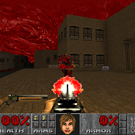So many languages: C, C++, Java, Javascript, C#… Most based on another!
What is the real thing about programming? Operating systems written in C, why not in C ++?
What language does one say “true programmer”, is there that?
Mathematics as implemented in code? That looks very different from writing on paper.
Should mathematics be learned or just used as a library?
Does a real and good programmer have time to always make a new math library when creating new software that will use it?
How is OpenGL studied and how do I know what it is and when to use #define for the graphic or whatever?
I would like to know opinions to increase my knowledge, thanks!










